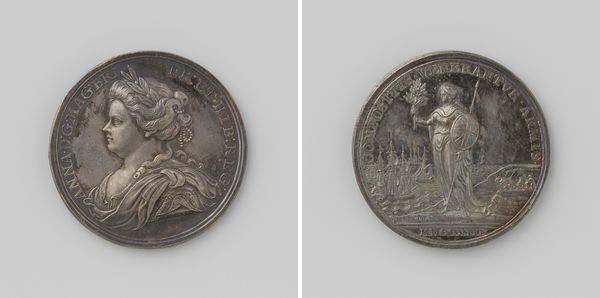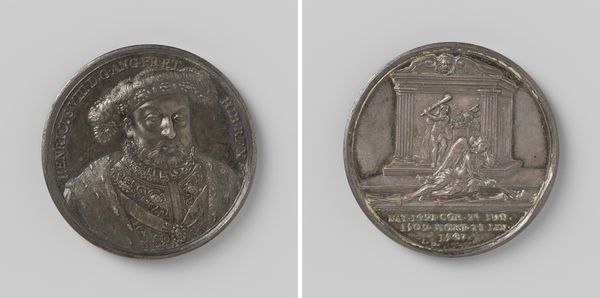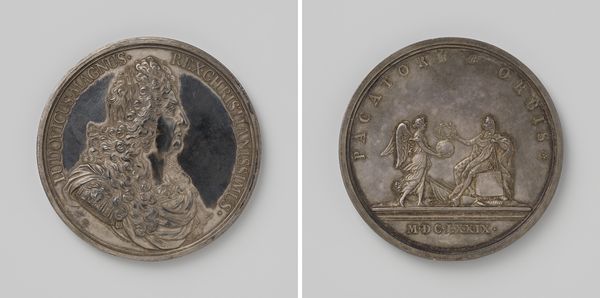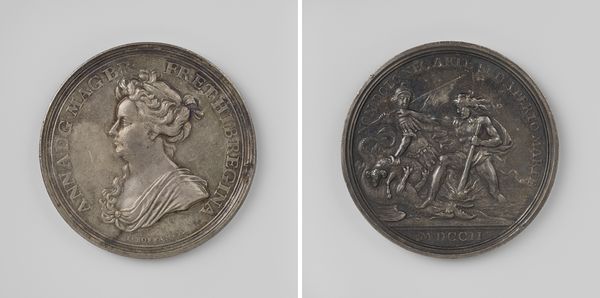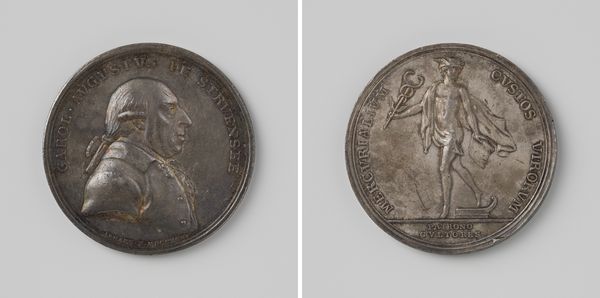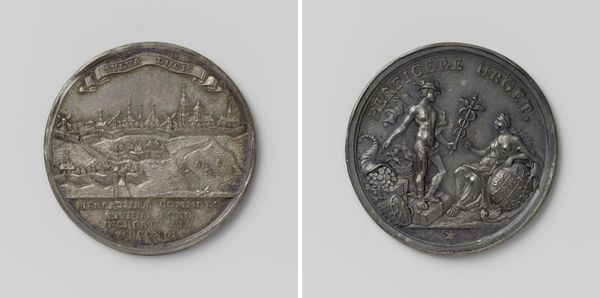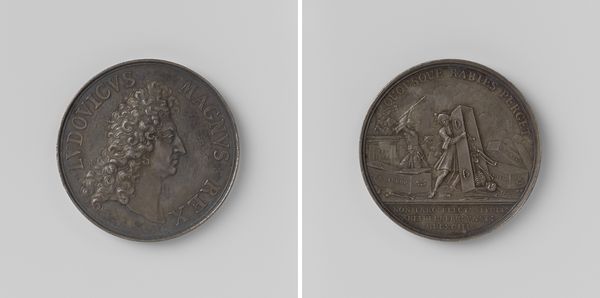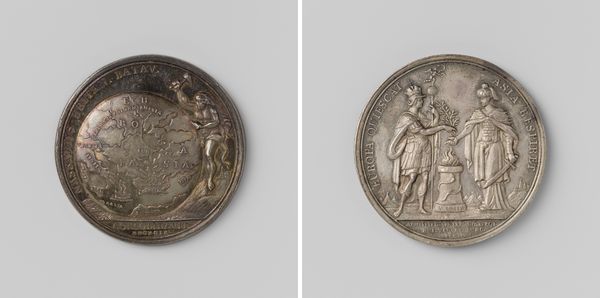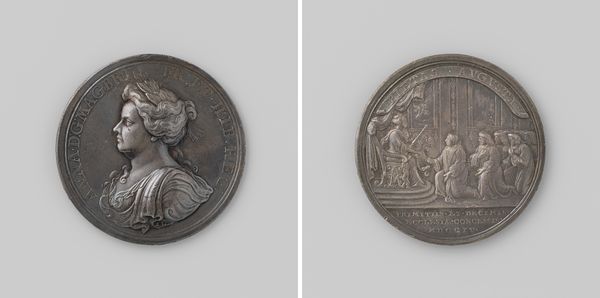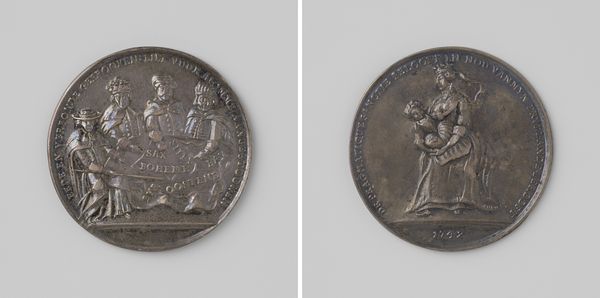
print, metal, sculpture, engraving
#
portrait
#
neoclacissism
# print
#
metal
#
sculpture
#
sculpture
#
ceramic
#
history-painting
#
engraving
Dimensions: diameter 4.1 cm, weight 54.17 gr
Copyright: Rijks Museum: Open Domain
Editor: Here we have "Slag bij Kamperduin, ter ere van Adam Duncan, admiraal van de Britse vloot" which translates to 'The Battle of Kamperduin, in honour of Adam Duncan, Admiral of the British Fleet,' created around 1820 by James Mudie. It seems to be an engraving of a commemorative coin, and it looks incredibly detailed. What strikes you first about this object? Curator: Well, immediately I think of the socio-political context implied by its very materiality. It's not grand painting or sculpture, it’s a coin, a reproducible object intended for circulation. How does the inherent value of the metal intertwine with the value it symbolically represents, namely Admiral Duncan's victory? Is the engraving purely a commemorative item, or does its creation and distribution reflect something about Britain's understanding of its naval power and its public image at that time? Editor: That's interesting, I hadn't considered that. So the coin isn't just about honouring the admiral, it’s a form of propaganda or national branding, almost? Curator: Precisely. Consider the labour involved in designing, die-striking, and distributing such a piece. How did this process affect the public perception of the event it commemorates? Also, consider the choice of imagery, the hand-shaking and so on – is it a direct reflection of historical events, or a carefully constructed narrative aimed at shaping public opinion? Editor: It’s fascinating how you can delve so deeply into the context simply by analyzing the materials and its process! I now look at it completely differently. Thanks for pointing that out. Curator: The intersection of art, commerce, and history is always ripe for exploration. It challenges traditional notions about what constitutes “high art”. I leave here with a deeper appreciation for material culture myself!
Comments
No comments
Be the first to comment and join the conversation on the ultimate creative platform.
